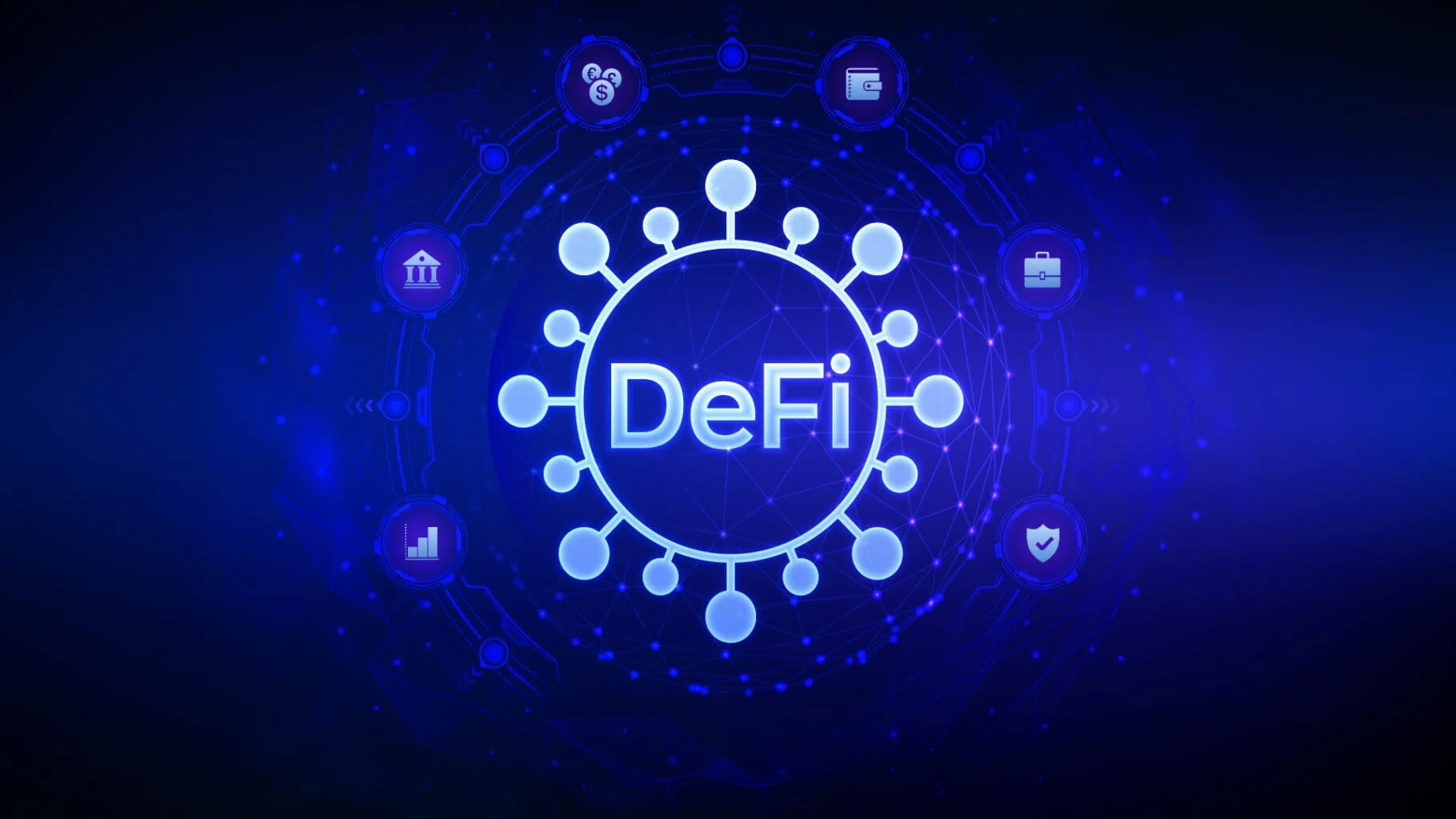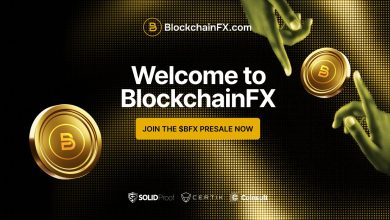How DeFi Is Funding the Next Generation of Infrastructure Projects


KEY TAKEAWAYS
- DeFi democratizes infrastructure finance, allowing global participation beyond traditional banks and institutions.
- Smart contracts automate funding, payments, and milestone verification, reducing costs and corruption risks.
- Tokenization of infrastructure assets introduces liquidity to projects once locked in illiquid markets.
- DAOs enable transparent governance, allowing communities to collectively fund and monitor infrastructure projects.
- Cross-chain DeFi ecosystems improve capital flow efficiency, attracting diverse investors across blockchains.
- Renewable energy projects benefit significantly from DeFi mechanisms like staking rewards and tokenized ownership.
- Regulatory clarity and education remain vital for bridging traditional finance and decentralized systems.
(DeFi) is swiftly transforming the global financial landscape by democratizing access to capital, automating transactions, and enabling programmable money without intermediaries. One of the most promising frontiers for DeFi lies in funding infrastructure projects, the backbone of economic growth worldwide.
Traditional infrastructure financing often suffers from bureaucratic delays, excessive costs, lack of transparency, and limited access to capital markets.
DeFi’s open, transparent, and efficient financial protocols now offer innovative pathways to mobilize capital for the next generation of infrastructure projects, reshaping how roads, energy grids, water systems, and public transport are funded and built.
The Traditional Challenges in Infrastructure Financing
Building and maintaining infrastructure requires massive investments, usually spanning billions of dollars and requiring cooperation among governments, private investors, and financial institutions.
Conventional financing includes government budgets, public-private partnerships (PPPs), and bond issuances. Despite these mechanisms, projects frequently face hurdles:
- Lengthy approval and funding cycles sluggish project initiation.
- Centralized intermediaries increase transaction costs and risks.
- Lack of transparency leads to inefficiencies and corruption.
- Access to funding is often limited to well-established institutional investors.
- Smaller investors have minimal participation opportunities.
These factors restrict innovation, delay critical infrastructure delivery, and impose barriers to financing sustainable and resilient projects.
DeFi’s Value Proposition for Infrastructure Funding
DeFi protocols operate on decentralized blockchains and use smart contracts to automate financial services like lending, borrowing, asset tokenization, and fundraising. This open financial system brings several key advantages to infrastructure financing:
- Global Access to Capital: DeFi removes geographic and institutional barriers, enabling anyone with an internet connection to invest in infrastructure projects through tokenized assets.
- Transparency and Trust: Fully auditable on-chain transactions reduce risks of fraud and corruption. Investors can track fund utilization and project milestones with ease.
- Efficiency and Cost Reduction: automate payments, enforce agreements, and reduce intermediaries, lowering fees and speedily releasing funds.
- Liquidity through Tokenization: Infrastructure assets can be tokenized into tradable digital securities or utility tokens, offering liquidity to previously illiquid investments.
- Programmable Incentives: Yield-bearing tokens and staking mechanisms incentivize long-term investor engagement aligned with project success.
These benefits position DeFi as a potent tool to bridge global infrastructure funding gaps while enhancing accountability and democratizing participation.
Real-World Use Cases of DeFi in Infrastructure Projects
The integration of DeFi with infrastructure funding is underway across several groundbreaking initiatives:
Tokenized Infrastructure Bonds and Funding Pools
Several blockchain projects have launched tokenized infrastructure bonds, allowing investors, retail and institutional alike, to purchase fractional stakes in roads, bridges, renewable energy projects, and real estate developments.
For example, platforms built on and Polygon enable the issuance of digital bonds whose proceeds directly fund infrastructure construction, with smart contracts ensuring orderly repayment of principal and interest.
Concurrently, decentralized autonomous organizations () pool capital from global communities to collectively decide which infrastructure projects to finance, combining crowd wisdom with blockchain transparency.
Decentralized Lending and Yield Farming for Infrastructure Capital
Leading DeFi lending protocols such as and Compound facilitate decentralized borrowing using collateralized digital assets, providing a new avenue for project developers to access capital without relying on traditional banks. Smart contracts enable conditional fund release upon achievement of construction milestones, improving accountability.
Some projects also incentivize yield farmers to stake tokens for infrastructure pools, earning passive income while supporting critical developments like solar farms or water treatment facilities.
Cross-Chain Interoperability Boosts Funding Efficiency
Emerging specializing in interoperable DeFi, inclusive of Injective Protocol and Cosmos, offer high-speed, low-cost cross-chain liquidity flows. These technological advances facilitate seamless capital movement across multiple blockchain ecosystems, broadening investor bases and maximizing funding sources for infrastructure.
The Impact of DeFi on Infrastructure Project Lifecycle
DeFi’s influence extends beyond funding to optimizing entire infrastructure project lifecycles:
- Project Initiation: DAO-based governance enables transparent project vetting and funding decisions involving diverse stakeholders.
- Procurement and Payment: Smart contracts enforce procurement rules, release payments automatically upon verifying progress, and reduce corruption risks.
- Operation and Maintenance: IoT devices connected to blockchain record operational data immutably, allowing for performance-based payouts and maintenance tracking.
- Asset Trading: Tokenized infrastructure assets can be traded on secondary markets, offering liquidity and attracting continuous investment.
This holistic integration enhances trust, efficiency, and sustainability across infrastructure development phases.
Challenges and Regulatory Landscape
Despite its promise, DeFi-powered infrastructure finance faces several challenges:
- Regulatory Uncertainty: Jurisdictions worldwide are still shaping frameworks for tokenized securities, cross-border capital flows, and DeFi governance, raising legal risks.
- Scalability and Security: Infrastructure projects demand long-term, large-scale investments; platforms and protocols must ensure blockchain networks can handle high transaction volumes securely.
- Investor Education and Trust: Wider adoption requires educating traditional investors and governments about blockchain’s benefits and risks.
- Governance Complexity: DAO participation demands inclusive yet efficient decision-making mechanisms to avoid factionalism or manipulation.
Addressing these challenges requires collaboration between regulators, technologists, developers, and infrastructure stakeholders.
Case Study: Renewable Energy and DeFi Funding Synergies
Renewable energy projects, solar farms, wind parks, and hydrogen plants represent a rapidly growing infrastructure segment well-suited to DeFi funding.
Tokenization enables distributed ownership among individuals and institutions motivated by green investments. Smart contracts automate incentive programs, rewarding energy production or carbon credit generation with tokens. Decentralized marketplaces increase liquidity, and DAO governance ensures transparency in environmental impact reporting.
For example, a solar energy DAO could raise capital through a token sale, maintain project oversight via collective voting, and distribute profits equitably. This model reduces reliance on traditional financiers and accelerates transitions to sustainable infrastructure.
Outlook and Future Trends
By 2030, DeFi-driven infrastructure finance is projected to grow exponentially alongside broader blockchain adoption. Anticipated developments include:
- Integration of artificial intelligence (AI) for project risk assessment and performance optimization.
- Expansion of fractional ownership models, allowing micro-investments in major public works.
- More sophisticated regulatory frameworks fostering secure innovation.
- Increased collaboration between DeFi protocols and traditional finance institutions.
- Enhanced cross-border capital flows are accelerating global infrastructure development.
The technology’s potential to overcome capital inefficiencies and increase transparency will be critical as infrastructure demand soars amid urbanization and climate change adaptation needs.
DeFi and the Future of Global Infrastructure Funding
In conclusion, DeFi is fundamentally reimagining infrastructure funding by democratizing capital access, automating financial flows, and fostering transparent governance. Through tokenization, decentralized lending, and smart contract automation, DeFi platforms empower a global pool of investors to actively finance and participate in next-generation infrastructure projects.
While challenges remain, ongoing technological advancements and regulatory maturation signal that DeFi will play an integral role in building sustainable, resilient infrastructure worldwide, unlocking economic growth and societal progress for years to come.
FAQ
How does DeFi improve infrastructure financing compared to traditional systems?
DeFi removes intermediaries, automates funding through smart contracts, and enables global access to capital. This makes project financing quicker, more transparent, and more inclusive.
What types of infrastructure projects can DeFi fund?
DeFi can fund diverse sectors such as transportation, energy, water systems, telecommunications, and renewable energy projects through tokenized assets and decentralized funding pools.
How does tokenization work in infrastructure projects?
Tokenization divides infrastructure assets—like bridges or solar farms—into digital tokens representing fractional ownership. Investors can trade or hold these tokens, providing liquidity to long-term projects.
What role do DAOs play in DeFi infrastructure funding?
DAOs (Decentralized Autonomous Organizations) pool global capital, vote on funding proposals, and ensure transparent project governance through blockchain-based decision-making.
Is investing in DeFi infrastructure secure?
While DeFi introduces transparency, it still carries risks—such as smart contract vulnerabilities, regulatory uncertainty, and volatile token markets. Due diligence and diversified participation are recommended.
How does DeFi promote sustainable infrastructure?
By funding renewable energy and environmentally responsible projects via tokenization and yield incentives, DeFi channels capital into sustainable infrastructure development.
What are the main barriers to large-scale DeFi adoption in infrastructure finance?
Key barriers include unclear regulations, limited investor understanding, blockchain scalability challenges, and complex DAO governance structures.







